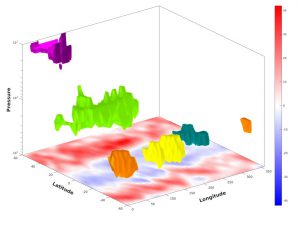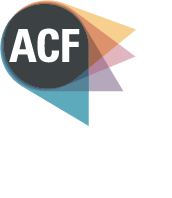Identifying coherent weather features in 3D
Working with mathematicians to analyse complex environmental data
In September 2015 we supported an Environmental Modelling in Industry Study Group workshop in Cambridge, where we presented a technical challenge about the identification and tracking of coherent weather features in three-dimensional data sets.
Our Challenge: Identification and Tracking of Coherent Weather Features in 3D data
Identification of weather features is crucial to both understanding the atmospheric processes occurring and predicting how the atmosphere may evolve. Traditionally, the temporal and spatial variability of weather features, such as fronts and surface pressure troughs, was deduced from just a few years of data on regional scales. With the aid of objective, computer-based analysis, global climatologies of weather features based on decades of data are now possible; for example, the first global climatology of fronts was published in 2011.
Kay Shelton from JBA presented the JBA Trust Challenge , which was to develop a generic computer-based tool or algorithm to identify coherent three-dimensional weather features in atmospheric data sets and to track their evolution over time.
You can download the JBA Trust Challenge here and see Kay’s presentation here.
Results
On the first day of the workshop a team formed to tackle the challenge problem comprising academics and scientists from the University of Bristol, University of Cambridge, RMS and the JBA Trust. We are grateful to Jonty Rougier, Ben Powell, Philip Rudd and Edward Skevington for their enthusiasm in tackling the challenge problem over the following four days.
The team’s solution to the challenge is summarised in a report that can be downloaded here and you can see Jonty’s presentation on the solution here.

A prototype version of the graph-based feature tracking software developed by the challenge team.
About the workshop
The workshop was hosted by the Turing Gateway to Mathematics in partnership with the EPSRC Living with Environmental Change – Maths Foresees Network and the NERC Probability, Uncertainty and Risk in the Environment (PURE) Network. Teams tackled challenges set by Fugro GEOS, JBA Trust, the Met Office and the Environment Agency.

